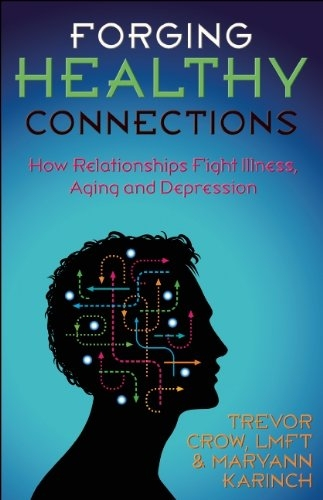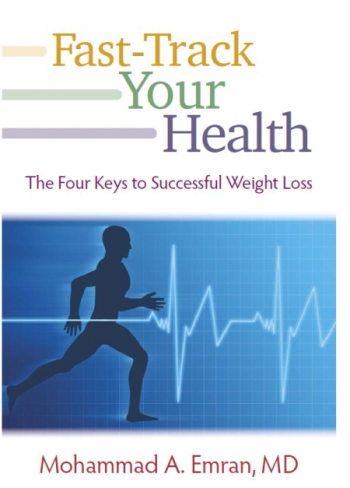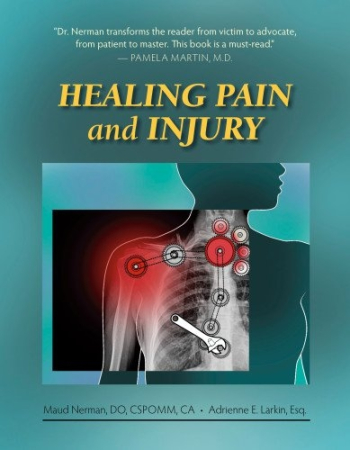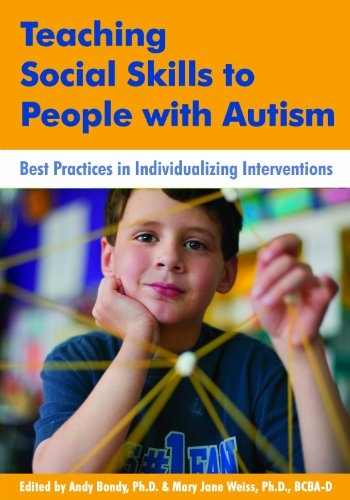Good Communication Skills Beat Pills
Five Books to Empower the Patient
Optimal health hinges on understanding and responding to our needs, motivations, and pain signals, as well as on our abilities to foster nurturing personal relationships through mindful connections. We are more likely to stay healthy when we are as fully informed as possible about the health conditions we face. Ideally, patients should communicate needs and preferences clearly with health practitioners, but that’s usually impossible without more information than any doctor would have time to explain. As a result, patients then feel pressured into accepting a course of treatment wholly decided on by their doctor.
These five books, though quite different from one another, have the same subtext. Whether it’s about feeling empowered to critically think through medical information, navigating personal social worlds, or even being honest with ourselves about the conditions we face, radiant health is rarely achieved through medical treatments alone. Ultimately, we must take control of our own health, even if we trust our doctors to know what’s best. Here are five empowering health titles to add to your arsenal, should the need arise.
Forging Healthy Connections
How Relationships Fight Ilness, Aging, and Depression

Trevor Crow
Marilyn Karinch
New Horizon Press
Softcover $14.95 (240pp)
978-0-88282-452-9
Buy: Amazon
It’s well known that people with happy relationships and marriages tend to live longer and face fewer health problems. In Forging Healthy Connections, authors Trevor Crow and Marilyn Karinch advise us of the research showing the harmful effects of fear on health, as well as the benefits of a life lived in joyful partnership: “Health and healing have their roots in emotions,” they write. Moreover, the authors also warn that if an “attachment injury” is suffered in childhood, it is very difficult to recognize the qualities of a happy marriage and healthy communication, and the existing emotional problems must be resolved before growth can begin.
The book focuses on heartwarming stories of couples who had major breakthroughs thanks to Crow’s Emotionally-Focused Therapy (EFT) methods in her marriage and family-therapy practice. Besides helping people recognize negative patterns, the authors point out how trust issues and emotional trauma can be reversed through empathy and forgiveness, even if we have a genetic disposition toward handling stress poorly. Readers won’t be overwhelmed with too much research on how ineffective or bullying communication styles can and will wreck people’s health, just enough to stop making excuses for a bad marriage. Healing a marriage is usually possible if both partners are hopeful.
CARRIE WALLACE (November 30, 2013)
Fast Track Your Health
The Four Keys to Successful Weight Loss

Mohammad A. Emran
Live out Loud Publishing
Softcover $14.95 (109pp)
978-0-9679338-9-4
Buy: Local Bookstore (Bookshop), Amazon
This strong weight-loss title focuses on beating obesity with four deceptively simple steps: setting goals, keeping a food journal, exercising, and following up regularly with a practitioner. As a weight-loss specialist and surgeon, author Mohammad Emran helps teens change their habits and lose excess weight for the long term.
No fads or hype—Emran teaches readers to communicate with themselves in a positive, honest way. Nor does he encourage conventional approaches to dieting. Instead, anyone who keeps a food journal and has a weight-loss goal will realize what they must do to bring their goals to fruition. Interestingly, the author notes that many people with weight-loss goals aren’t completely honest in their food journal, effectively losing weeks of treatment time before reevaluating their habits and facing up to the importance of understanding their bodies and habits.
When it comes to goal-setting, readers are encouraged to be positive and decisive about what they will do and think rather than, for example, what they will give up. A statement like “I’ll stop eating junk food tomorrow” takes the focus off the healthy food that is the actual goal. The book is short, smart, and motivating, and should help readers get serious about weight issues.
CARRIE WALLACE (November 30, 2013)
Winning the Battle against Prostate Cancer
Get the Treatment that Is Right for You

Gerald Chodak
Demos Health
Softcover $19.95 (440pp)
978-1-936303-54-0
Buy: Amazon
“Cut and Burn” treatments—prostate or lymph node removal, medical sterilization, different modes of radiation, and other highly invasive treatments—have been standard practice for prostate-cancer specialists for decades, although recent research indicates that such interventions may not extend life expectancy. And then there are the medications, most of which come with devastating side effects. Regardless of the treatment, a patient’s quality of life will suffer with these common standards of care.
With a wonderfully unbiased orientation toward informed consent and individualized care, Gerald Chodak, MD, provides an exhaustive analysis of the modern prostate-cancer treatments in Winning the Battle Against Prostate Cancer. Chodak is clear about what lab results mean for prognosis, and he suggests objective options.
The book is organized by order of what can be done when a previous intervention has failed. Informative research will help patients work out their own cost-benefit analysis of different treatment methods, including new and experimental treatments. Chodak also analyzes the value of some alternative health practices (diet, herbs, and supplements), and is a enthusiastic proponent of vegan diets. Winning the Battle doesn’t encourage readers to be at odds with their doctors. Instead, they will benefit from the realization that not all prostate cancer treatments are right for every man.
CARRIE WALLACE (November 30, 2013)
Healing Pain and Injury

Maud Nerman
Bay Tree
Softcover $24.95 (384pp)
978-0-9859399-0-8
Buy: Amazon
Celebrated osteopathic physician and homeopath, Maud Nerman, DO, has “discovered a magic pill that will help you heal. It is your commitment to your own healing.” For those dealing with daily, long-term pain issues and traumatic brain injury, this pill might be more appealing than semipermanent sedation through pharmaceutical measures.
Nerman offers health advice on a multitude of problems, from adjusting the cranial joints of newborns unable to breastfeed due to birth trauma to people with allergies, sexual disorders, lower-back pain, or certain neurological symptoms. Those who don’t understand osteopathy’s underlying concepts may balk at the seemingly miraculous healing that Nerman suggests is a normal result, but she effectively outlines why osteopathy works.
Whether or not readers become convinced they need the services of an osteopath (cranial osteopathy is not currently a DIY technique), Nerman insists that a great deal of healing can be done on one’s own. The book focuses on helping readers understand their bodies and manage their pain through yoga postures, diet, and assimilation of anatomy and physiology information. Playful illustrations (picture a soda can adorned with sexy legs and stiletto heels stomping on a brain to communicate the seriousness of dietary-induced inflammation) and accurate anatomical diagrams help communicate essential concepts.
Nerman’s explanations range from highly medicalized to cutesy, as when she explains treating the liver with osteopathic adjustments: “My job as an osteopathic physician is to lead the liver back home and tuck it back in its bed, where it snuggles up against the diaphragm.” The upshot: this book is fun to read, informative, and motivating.
CARRIE WALLACE (November 30, 2013)
Teaching Social Skills to People with Autism
Best Practices in Individualizing Interventions

Andy Bondy, editor
Mary Jane Weiss, editor
Woodbine House
Softcover $29.95 (200pp)
978-1-60613-011-7
Buy: Amazon
Sometimes the ability to connect with others must be developed through specific exercises. When autistic children engage in play therapy, for example, their verbal and social skills improve dramatically. Teaching Social Skills to People with Autism, edited by Andy Bondy, PhD, and Mary Jane Weiss, PhD, offers a thorough review of recent, often hopeful literature on issues like measuring social skill performance, motivational strategies, choosing the right therapies for a child’s needs, and new interventions within current models (such as imitative and imaginative play). Readers will also better understand the theories and practices of autism therapists, and parents of autistic children will be better prepared to engage in conversations with autism therapists about possible treatments.
The book is best suited for autism professionals who are aware of current models but who may need more information on effective approaches within existing programs. There are also applications for teachers who work with autistic children in integrated classroom settings.
Ideally, these methods will help children transfer what they have learned to a variety of social environments, and these interventions will make the autism diagnosis less defining of a child’s life chances.
CARRIE WALLACE (November 30, 2013)
Carrie Wallace
